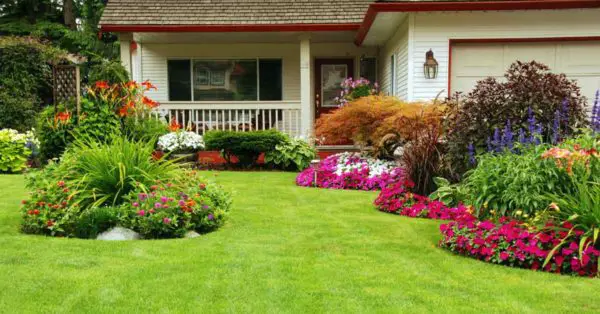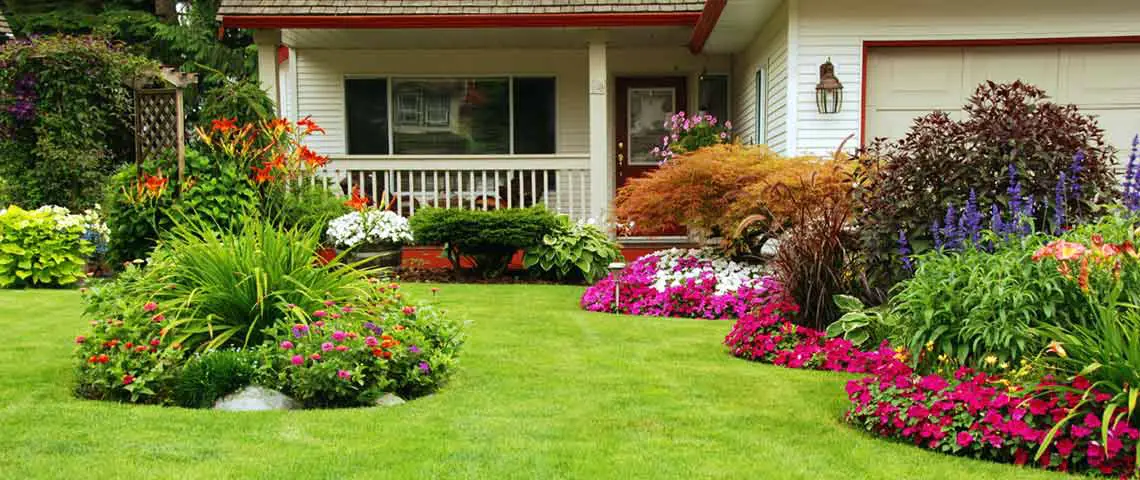There have been many arguments made against growing a lawn in Australia. The naysayers are quick to point its “undesirable impacts” such as the use of nature-harming weapons (chemical sprays, lawnmowers, etc.), less contribution to plant and animal life (when compared to natural vegetation), and use of a limited resource such as water.
But there are a ton of benefits to growing a lawn and it’s more than just making your front yard look more aesthetically pleasing. Today we’ll be discussing why you should consider growing a lawn on Australian soil and what native grass options are available for you to choose from.

Why it’s good to grow a lawn
Large areas of lawn like those in public gardens and parks can serve as a heat magnet on hot weather conditions. Take for example the Oak Lawn in the Melbourne Gardens. It’s a woodland that’s filled with mown turf and large, mature trees that make it as cool as its neighbour the Fern Gully, a natural gully that’s rich in vegetation and running water.
Both areas are much cooler than nearby cities. When the temperatures hit above 30 degrees, both the Oak Land and Fern Gully are six degrees lower. There’s no doubt that it’s better for the environment that you cool off in a lush greenery rather than your air-conditioned cabin.
You may not know it, but there’s a design aspect that comes with growing a lawn. Landscape architects call it the void which is the space between the mass of shrubbery. They absorb air and noise pollutants and you can even sit on them for your own comfort. There’s also the provocative argument where if gardens were to conserve more water, they would consider removing all nearby trees and replace them entirely with warm-season lawns.
It’s an interesting theory, no doubt, but if we were to talk about growing a lawn, it is possible to save water without having to use an irrigation system.
Achieving a green lawn that’s unirrigated
You can definitely achieve a green lawn almost all-year round without resorting to an irrigation system. How? By keeping the surrounding trees to an absolute minimum and by planting kikuyu grass on your soil. Any tree will compete for water whether it be from the soil or the sky. There’s no need to fertilise quite often since kikuyu grass is low-maintenance and can tolerate minimum fertility.
That said, a little bit of nitrogen can go a long way towards helping kikuyu grass retain its durable characteristics. After lawn mowing where you can find the services from mowingperth.com.au, leave the lawn clippings to help give your lawn a boost in nitrogen. There are other grass types that you should consider depending on where you live. Kikuyu grass can be weedy and it’s best to prevent it from spreading into neighbouring bushland.
Buffalo grass is also a worthy consideration. It shares some of the low-maintenance qualities from kikuyu grass and can make for a great lawn, especially in shady areas. Keep in mind that buffalo grass is less tolerant to foot traffic than kikuyu grass so it’s best to reserve it in areas where people walk infrequently.
Native grass options
If you don’t mind an unkempt look, you should take a look at growing a native grass lawn. The Australian grass species require minimal watering and fertilising and if inter-planted with indigenous wildflowers, can attract nearby wildlife. A fine example is weeping grass (Microlaena stipoides) which springs back to life after drying out. Australian mat grass ( Hemarthria uncinata) is a bit like kikuyu in some aspects, but requires a lot of weeding to keep it in good shape.
If you’re looking for a native grass species that the kids will enjoy, kangaroo grass (Themeda triandra) is an excellent choice. It draws in butterflies and has beautiful stems and seed pods that can spark their curiosity and imagination. The leaves of kangaroo grass grow to about 50cm long which turn from green to red over time. Kangaroo grass can tower over 1m in height (including the flowers) and will look beautiful in a garden when planted in groups.
The last native grass we recommend is windmill grass (Chloris truncata). As the name suggests, windmill grass has flowers that look like tiny windmills. Couple that with its 15cm tussocks and it reaches a length of about 40cm. Exotic species such as couch also come with shaped flowers so make sure to double-check if you’ve selected the right species. Windmill grass makes a great alternative for low-traffic areas and can withstand the occasional precipitation.
One of the main advantages of growing native grass is that it attracts good bugs that help fight insect pests in your garden. For example, market gardeners plant native grass to protect their veggie patch while grape-growers use them to safeguard their vines. Consider the characteristics of each native grass and select one that fits your needs accordingly.


